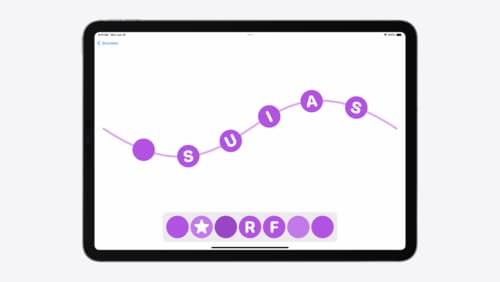How does SwiftUI state-driven navigation works?
Asked on 2024-09-07
1 search
SwiftUI's state-driven navigation is a powerful feature that automatically updates the user interface as the underlying data changes. This approach eliminates the need for boilerplate code and reduces the likelihood of update bugs. Here's how it works:
-
State Management: In SwiftUI, views are state-driven. When the state of a view changes, SwiftUI automatically updates the UI to reflect these changes. This is achieved by maintaining a representation of the user interface behind the scenes. As data changes, new view values are created and provided to SwiftUI, which then determines how to update its outputs. This process is described in the SwiftUI essentials session.
-
Declarative Views: SwiftUI views are declarative descriptions of the UI's current state. They are not long-lived object instances that receive imperative commands over time. Instead, SwiftUI uses these descriptions to create an efficient data structure that represents the views, which is used to produce different outputs, such as what's shown on screen and the interactive aspects of the view. This concept is further explained in the SwiftUI essentials session.
-
Animations and Transitions: SwiftUI builds animations on top of the same data-driven updates. When a state change is wrapped with an animation, the resulting view updates are applied with a default animation. You can also customize transitions to fit specific needs, as demonstrated in the SwiftUI essentials session.
Overall, SwiftUI's state-driven navigation simplifies the process of keeping the UI in sync with the underlying data, making it easier to build responsive and dynamic applications.

SwiftUI essentials
Join us on a tour of SwiftUI, Apple’s declarative user interface framework. Learn essential concepts for building apps in SwiftUI, like views, state variables, and layout. Discover the breadth of APIs for building fully featured experiences and crafting unique custom components. Whether you’re brand new to SwiftUI or an experienced developer, you’ll learn how to take advantage of what SwiftUI has to offer when building great apps.

Enhance your UI animations and transitions
Explore how to adopt the zoom transition in navigation and presentations to increase the sense of continuity in your app, and learn how to animate UIKit views with SwiftUI animations to make it easier to build animations that feel continuous.

Create custom visual effects with SwiftUI
Discover how to create stunning visual effects in SwiftUI. Learn to build unique scroll effects, rich color treatments, and custom transitions. We’ll also explore advanced graphic effects using Metal shaders and custom text rendering.
